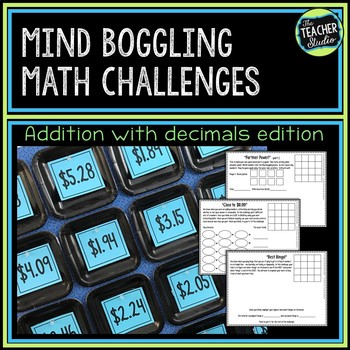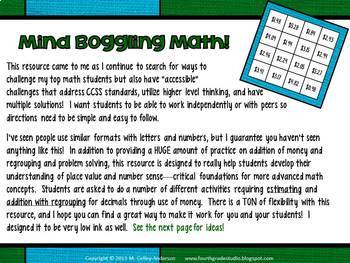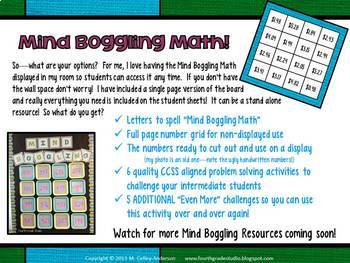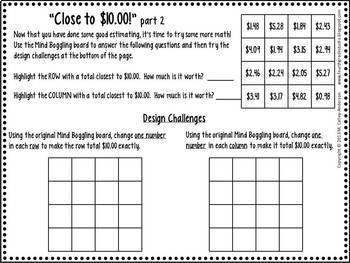Money and Decimals Math Enrichment Activities | Mind Boggling Math Center
- PDF
Description
This resource came to me as I continue to search for ways to
challenge my top math students but also have “accessible”
challenges that address state standards, utilize higher level thinking, and have multiple solutions! I want students to be able to work independently or with peers so directions need to be simple and easy to follow.
I’ve seen people use similar formats with letters and numbers, but I guarantee you haven’t seen anything like this! In addition to providing a HUGE amount of practice on addition with regrouping and problem solving, this resource is designed to really help students develop their understanding of place value and number sense—critical foundations for more advanced math concepts. Students are asked to do a number of different activities requiring estimating and addition with money. There is a TON of flexibility with this resource, and I hope you can find a great way to make it work for you and your students! I designed it to be very low ink as well.
So—what are your options? For me, I love having the Mind Boggling Math displayed in my room so students can access it any time. If you don’t have the wall space don’t worry! I have included a single page version of the board and really everything you need is included on the student sheets! It can be a stand alone resource! So what do you get?
--Letters to spell “Mind Boggling Math” for a bulletin board (optional)
--Full page number grid for non-displayed use
--The numbers ready to cut out and use on a display
--6 quality problem solving activities to challenge your intermediate students
--5 ADDITIONAL “Even More” challenges so you can use this activity over and over again!
------------------------------------------------------------------------------------------------------
Looking for other versions?
Mind Boggling Math Grade 3-5 Version
Mind Boggling Math Grades 2/3 Version
------------------------------------------------------------------------------------------------------
All rights reserved by ©The Teacher Studio. Purchase of this problem set entitles the purchaser the right to reproduce the pages in limited quantities for single classroom use only. Duplication for an entire school, an entire school system, or commercial purposes is strictly forbidden without written permission from the author at fourthgradestudio@gmail.com. Additional licenses are available at a reduced price.





